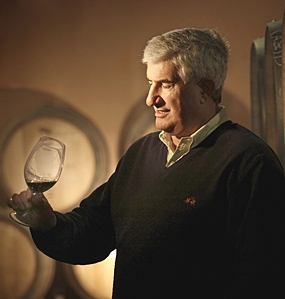Did you know that there are about ten thousand species of wine-grapes in the world? The chances are that the average wine-drinker would encounter only a couple of dozen of them in the same number of years. You see, the vast majority are somewhat obscure. I mean, how often have you tasted wine made from the Bogazkere, the Magaratch Bastardo or the Neherleschol? Not very often, I’d guess.
Many of these obscure grapes have remained in their places of origin for years and never left. On the other hand, some grapes have boldly gone where no grapes have gone before. Take Chardonnay for example. Its spiritual home is in Burgundy but it thrives wherever wine is produced. Cabernet Sauvignon shows up in nearly every major wine-producing country and the Syrah (or Shiraz) grows everywhere in the world, although it’s actually the offspring of two fairly obscure grapes from south-eastern France.
“Vistaflor” Malbec – Sangiovese 2010 (red), Argentina (Villa Bt. 349)
You can guess a lot about this wine from the two grape varieties used in the blend. The Sangiovese (san-joh-VAY-zeh) grape hails from Italy and if you’ve ever drunk a glass of Chianti, you’ve tasted Sangiovese. It often produces wines rich in cherry aromas. The Malbec grape may be less familiar but its origins are in France, where it still grows, especially in the south-west. It turned up in Argentina during the nineteenth century where it produces dark, inky wine with intense fruity flavours, soft tannins and a velvety texture. The Argentineans have since claimed Malbec as their signature grape.
 Jorge Ricitelli, Chief Wine Maker at Bodegas Norton.
Jorge Ricitelli, Chief Wine Maker at Bodegas Norton.
This wine comes from the famous Bodegas Norton in Mendoza and is a striking dark ruby-red, with a gorgeous aroma of black fruit and black cherries and some spiciness in the background. The aroma wafts out of the bottle the moment you open it. Thanks to the Malbec, the taste is much softer and gentler than you’d expect but with a touch of assertiveness. It’s as dry as they come, but softened by loads of cherry fruit flavours from the Sangiovese and blackberries from the Malbec. The tannins are extremely soft – barely noticeable in fact, but they add firmness to the body.
This is a really lovely wine, but at 13.5% alcohol content it’s pretty well near the top of the destruction scale. It would work well with assertive dishes, red meat, game or even a spicy pizza.
“Las Condes” Carmenere 2010 (red), Chile (Villa Bt. 395)
Three hundred years ago, the French Carménère grape was widely planted in Bordeaux but by the mid-nineteenth century had all but disappeared, thanks to the phylloxera plague in the 1860s which nearly destroyed all the vineyards in Europe. The plague affected the Carménère grapevines in particular and for many years afterwards, the grape was presumed extinct. However, Carménère eventually turned up in Chile, because as luck would have it, local growers had imported cuttings from Bordeaux before the plague struck.
It’s impossible to find Carménère grapes in France these days, but in Chile they grow profusely. Like the Malbec in Argentina, the Carménère has become Chile’s signature grape. The Spanish-speaking Chileans usually spell it Carmenere, without the accents, though pronunciation guides conflict. The majority seems to favour “kahr-min-YEHR” but others prefer “KAHR-min-air-ray”. Up to you, as they say in these parts.
Anyway, let’s get to the wine. It’s made from 100% Carmenere and has a lovely sweet, jammy aroma of black fruits, with a suggestion of dried herbs and spices (cinnamon, I’d guess) in the background. The medium-bodied wine is a rich ruby-red with flecks of purple and has a very gentle, almost silky mouth-feel. With loads of fruit up-front and a pleasing earthy dryness to the taste, there are subtle hints of sweetness and spices. It tastes rather similar to a Merlot, but with a more velvety texture.
The tannins are soft and supple and there’s a lingering dry, peppery finish. At just 12.5% alcohol content it’s a very attractive easy, relaxing drinker. It’s a bit like settling into an old and very comfortable leather sofa. But wait a moment – before you go, try a glass of this rather pleasant Hondarrabi Zuri.




